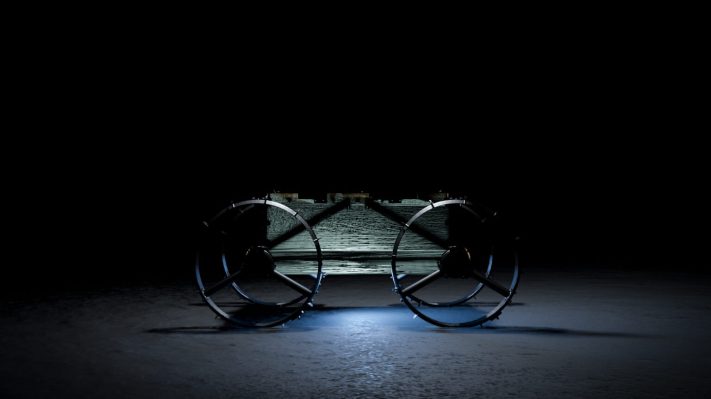Pittsburgh-based Astrobotic will be sending its CubeRover platform to the moon under a new award from NASA. The company will use CubeRover to test technologies for surviving the lunar night and communicating across greater distances on the moon’s surface.
Lunar night survival is trickier than one might think. Nights on the moon are long — up to 14 days of darkness at a time — and frigid, with temperatures dropping under –200 degrees Fahrenheit. Temperatures that low pose a major threat to power components like batteries, and effectively put a stop to many lunar missions before they can even begin.
It’s a big problem for NASA, which has ambitions of conducting extended lunar missions with uncrewed landers and rovers through the rest of the decade. Eventually, the space agency intends to establish a permanent presence on the moon through its Artemis program. But in order to do that, thermal systems will need to work around the clock.
To solve this problem, CubeRover will be testing thermal systems capable of lasting through extended darkness and extremely low temperatures. Astrobotic will also demonstrate this technology, which it is developing as part of a subcontract with Advanced Cooling Technologies, Inc. on the Peregrine and Griffin landers.
CubeRover will also demonstrate the ability to communicate with satellite relay systems. Many existing rovers rely on the host lander to act as a relay to communicate with Earth, using existing protocols like Long Term Evolution (LTE). But such systems depend on a continuous line of sight between the rover and the lander. That places a major handicap on how far the rover can travel.
“This mission has the potential to usher in a new era of robust lunar robotics where instruments and payloads can survive months to even years on the Moon’s surface,” Mike Provenzano, Astrobotic’s director of lunar surface systems, said in a statement. “CubeRover will survive longer and drive farther than any lunar rover in its class with this flight, taking Astrobotic a major step forward in opening the Moon to sustained long-term robotic operations.”
The contract is funded through NASA’s Small Business Innovation Research (SBIR) Sequential Phase II program. The space agency’s SBIR program is designed to fund small businesses, entrepreneurs and research programs, and it has three phases; the third and final phase provides the opportunity for awardees to commercialize their technology with NASA or in the private sector. Astrobotic did not disclose the amount of the award.
Astrobotic’s two landers will also be heading to the moon under contracts with NASA. Peregrine will go to the moon this year under a $79.5 million Commercial Lunar Payload Services (CLPS) program award; a larger lander, Griffin, will be sending a NASA rover called VIPER to the moon in 2024, also under the CLPS program. The mission was originally scheduled to launch in 2023, but the agency announced in July it was delayed by one year due to requiring more testing on the lander.
